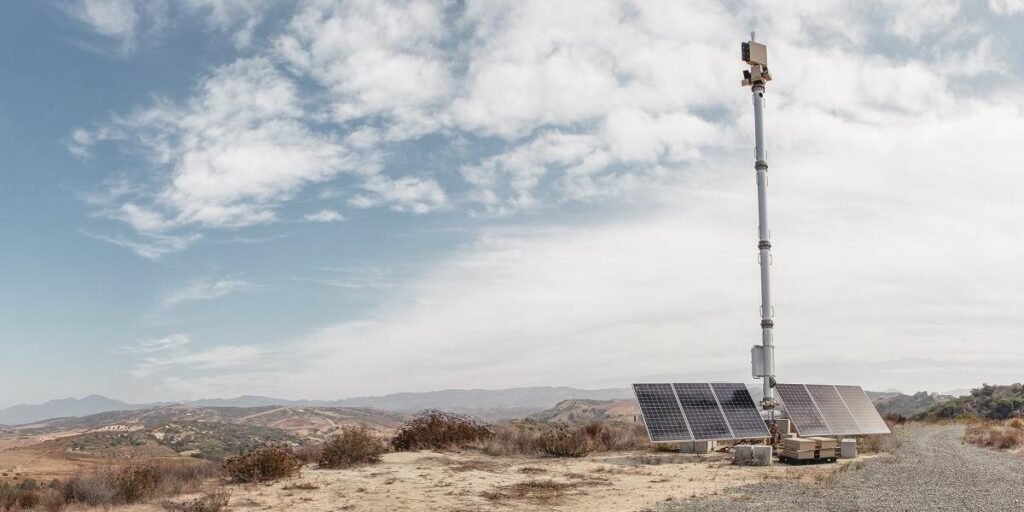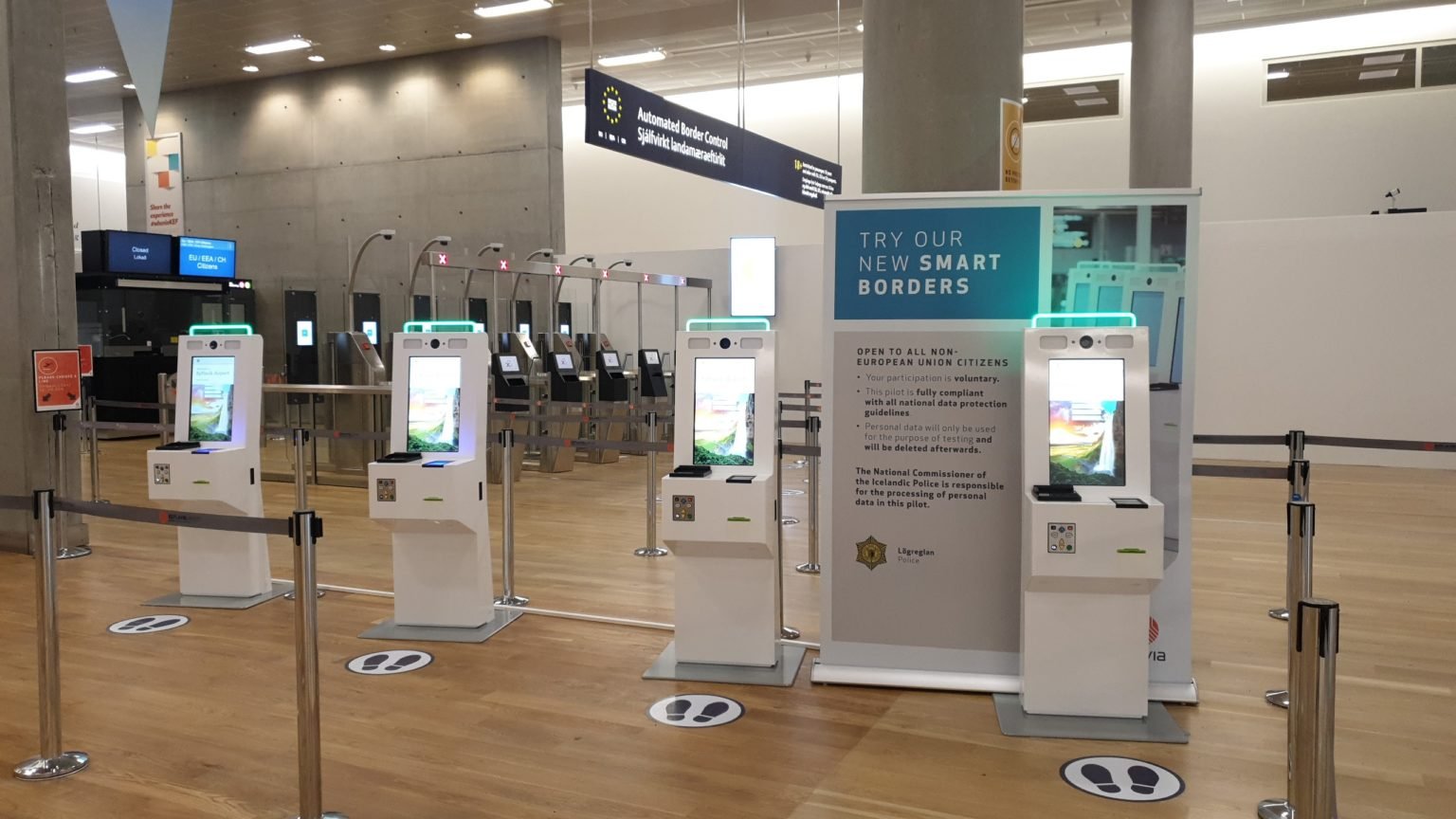The disastrous situation at the US-Mexico border is, and has been, intentionally produced. Throughout the last several administrations, regardless of campaign and other public rhetoric, the porous nature of the border has remained unresolved. On several occasions, the situation as it has developed has been blamed largely on incompetence and government inefficiency. Though some administrations have been tougher than others in regards to terrestrial migration (under some metrics), the US-Mexico border has not been sealed off so to force entrants to cross through officially recognized and managed ports of entry.
Under the current administration, it has been pointedly obvious that even the sections of the border that do contain physical barriers are being dismantled on purpose, all the while illegal crossings have risen to unprecedented levels. Whatever the motives for this deliberate policy on the part of the Biden administration, the end result has been the widespread characterization of the crisis as an “invasion,” priming the voter bloc usually most concerned with border security – the American Right – for military-style “solutions.”
While the justifications for the frenzied media coverage are based on the actual reality that the border is indeed highly insecure (and has been for some time), the policy responses from American politicians reveal that there is a bipartisan consensus about what must be done. Tellingly, the same “solution” is also being quietly rolled out at all American ports of entry that are not currently being “overrun”, such as airports. That solution, of course, is biometric surveillance, enabled by AI, facial recognition/biometrics and autonomous devices.
This “solution” is not just being implemented throughout the United States as an alleged means of thwarting migrants, it is also being rapidly implemented throughout the world in apparent lockstep. The reasons for the unspoken, but obvious, global consistency in implementing invasive, biometric surveillance is due to the fulfillment of global policy agendas, ratified by nearly every country in the world, that seek both to restrict the extent of people’s freedom of movement and to surveil people’s movements (and much, much more) through the global implementation of digital identity. Those policy agendas include mainly the UN’s Agenda 2030 or Sustainable Development Goals, specifically SDG 16, as well as Interpol’s Global Policing Goals.
While the American Right has been rather outspoken in its rejection of the UN’s Agenda 2030, and the digital ID project at large, the distress over the border situation is being used to manufacture consent among this specific group for “solutions” that are focused on expanding surveillance and biometric collection as opposed to the implementation of physical barriers.
The Virtual Wall
The Hawaiian shirt-wearing inventor of the VR headset Oculus Rift, Palmer Luckey, has become the face of America’s “virtual border wall.” Luckey, the brain behind the defense tech firm Anduril, is a long-time associate of Palantir co-founder Peter Thiel, with Luckey having met Thiel at 19 when Luckey presided over his first company Oculus Rift, which was later sold to Facebook. Thiel was then on Facebook’s board and was also instrumental in the rise of the social media company. Luckey’s Anduril is also backed by Thiel’s Founders Fund and another Palantir co-founder, Joe Lonsdale, is also an Anduril investor.
Anduril is one of the main beneficiaries of government contracts to build autonomous surveillance towers along the US-Mexico border, which are now also being rolled out along the US-Canada border. As a consequence, they are likely to be among the beneficiaries of the Senate’s current proposal for “border security,” which sets aside $170 million for additional towers to be build.
Under the Trump and now Biden administrations, Luckey has been vocal about how Anduril will create “a digital wall that is not a barrier so much as a web of all-seeing eyes, with intelligence to know what it sees.” As noted by WIRED in 2018, Luckey and Anduril has long been pitching its technology “as a complement to – or substitute for – much of [then] President Trump’s promised physical wall.”
Luckey was a donor to Trump’s inaugural committee and his apparent mentor, Peter Thiel, was a key figure on Trump’s transition team, particularly for defense. The company dresses itself in “America First” rhetoric, especially when it comes to border security, framing itself as a beacon of “Western democracy” and nationalism in an age of globalism. Despite this, Anduril is part of a network that fronts for the long-standing surveillance ambitions of the same American “Deep State” that Trump supporters revile.

Luckey’s Anduril would not exist without the assistance of Thiel and several executives from Thiel’s Palantir. As Unlimited Hangout has reported in multiple articles, Palantir is a CIA front explicitly aimed at resurrecting the controversial surveillance dragnet once housed by the Pentagon’s DARPA known as Total Information Awareness (TIA), which sought to use warrantless, dragnet surveillance of Americans to prevent crime and terrorism before it happens (i.e. pre-crime, a field which Palantir has since pioneered and which was essentially made DOJ policy by Trump’s Attorney General William Barr).
One of those Palantir executives who later came to Anduril, Trae Stephens, worked at a government intelligence agency (he declines to specify which one) before joining Palantir. From there, Stephens joined Thiel’s Founders Fund and ended up on the boards of some of the most controversial Founders Fund-funded companies, such as Carbyne911. Financed in part by Jeffrey Epstein and the brainchild of former Israeli Prime Minister (and Epstein associate) Ehud Barak, Carbyne’s platform also involves invasive data collection from civilians and “predictive policing” functionalities. On Carbyne’s board, Stephens originally sat alongside Barak as well as Israeli intelligence-linked figures like Pinchas Buchris (former commander of Israel’s Unit 8200), Lital Leshem (“former” Israeli intelligence operative who know works for documented CIA asset and former head of the infamous mercenary group Blackwater, Erik Prince), and Nicole Junkermann (an Epstein associate who has since rebranded as a venture capitalist in emerging technologies and FinTech). Stephens remains on Carbyne’s board, where he now sits alongside former US Homeland Security chiefs Michael Chertoff (Bush administration) and Kirstjen Nielsen (Trump administration).
Thanks in part to Thiel’s influence over the early Trump administration, Stephens was chosen to oversee Trump’s transition team for the Defense Department, where he “steered” Trump’s early Pentagon policies. At the time, Stephens was also in talks with Luckey to create a new company. After Luckey left Facebook under a cloud of controversy in late March 2017, he and Stephens created Anduril and other Palantir executives were recruited to join the company. Within a year of its existence, Anduril had already netted millions in contracts from the Department of Homeland Security. Stephens has remained at Thiel’s Founders Fund since co-founding Anduril.
Not unlike Palantir, Anduril is also a modern reboot of a failed DHS initiative from around the same time as TIA. The Secure Border Initiative Network (SBInet) was a Bush-era DHS effort that sought to build a virtual border wall that could not only deter and detect illegal border crossings, but also automatically designate those illegal crossers a “threat level” as well as predict “illegal border activities” before they occur. Like Anduril, it relied on surveillance towers and a litany of sensors spread throughout the environment. The program, though shuttered by DHS in 2011, never actually ended, as the DHS report announcing the “end” of SBInet stated the following:
DHS is currently developing a comprehensive border technology deployment plan that will build upon successful technology currently deployed and provide the optimum mix of proven surveillance technologies by sector. Where appropriate, this technology plan will also include elements of the former SBInet program that have proven successful.
Just like Anduril’s marketing strategy, SBInet was pitched as a cheaper, more cost-effective and “faster” means of securing the border than the construction of physical barriers. Anduril has openly laid out its strategy to avoid the pitfalls of SBInet; whereas SBInet was doomed to fail by hiring incompetent contractors to build and sell the system to the government, Anduril plans to own the system it builds and lease it to the government, which – according to Trae Stephens – “creates an incentive to keep development costs low.” Despite claims it is “low” cost, since 2017, massive DHS contracts have been given to Anduril to fulfill many of the original ambitions of the SBInet project and, despite the construction of hundreds of towers and millions spent, the border remains more insecure than ever.
One of Anduril’s earliest advocates was Congressman Will Hurd, a former officer in the CIA’s clandestine operations division who now represents Texas in the House of Representatives. With Hurd’s help, Anduril was able to place their first prototypes for the “virtual wall” on the border-adjacent private property of an anonymous rancher. Custom and Border Protection (CBP) then conducted their first official pilot of Anduril towers in 2018, leading to the Trump administration’s approval to deploy Anduril’s towers along the entirety of the south-western border in 2020. That approval saw Anduril awarded a five-year and still-ongoing contract and also saw the contract designated a “program of record,” meaning it is deemed essential enough to be a dedicated item in the DHS budget.
Trump, in the latter years of his presidential term, began to embrace the type of virtual wall that Anduril would enable even more so than the physical barrier he had campaigned on. In January 2019, for example, Trump stated “The walls we are building are not medieval walls. They are smart walls designed to meet the needs of frontline border agents.” The “smart walls”, Trump went on to say, would include “sensors, monitors and cutting-edge technology.”
Under the Biden administration, Anduril’s star has continued to rise. This is partially due to the millions the company has spent lobbying Congress, but also facilitated by the long-standing bipartisan love affair with building a “smart wall” on the Southern border. CBP was given millions for autonomous surveillance towers along the border in the 2021 US Citizenship Act and then again in the 2022 omnibus bill, with millions more granted last year. The lion-share of that money is destined for Anduril’s coffers. This year, if the Senate’s bipartisan “border security” efforts are any indication, Anduril stands to gain even more contracts to build ever more autonomous towers, which are now accompanied by autonomous drones and other connected devices. Luckey, despite Anduril’s claims that there will always be human oversight of its products, has stated that his vision for the future of warfare that Anduril is helping to build will soon result in humans playing ever more insignificant roles.

While Anduril is one of the main companies building the “virtual wall,” they are not alone. General Dynamics, a defense firm deeply connected to organized crime, espionage scandals and corruption, has developed several hundred remote video surveillance systems (RVSS) towers for CBP while Google, another Big Tech firm with CIA connections, has been tapped by CBP to have its AI used in conjunction with Anduril’s towers, which also utilize Anduril’s own AI operating system known as Lattice. Anduril is merely the visible face of the “virtual wall” that has positioned itself in close proximity to Trump’s political movement and is sure to benefit if Trump is re-elected later this year. However, Anduril has been more than happy to cozy up to the Biden administration, having praised Biden for calling to develop border protection measures using “high-tech capacity,” which they have say they’ve “delivered.”
Yet, despite support from both political parties, millions upon millions of funding and several hundreds of towers and supporting devices deployed, this “virtual wall” has done nothing to stop the drastic increase in illegal migration into the United States. Why, since the towers were deployed, are illegal crossings skyrocketing? Why is it that the proposed solution to this “invasion” is to build even more towers? One could argue that the answer to those questions lies in the fact that the border crisis is being used to manufacture consent amongst Americans for the implementation of a surveillance panopticon, not just on the border, but well into the interior of the country.
The Thiel-Funded, All Seeing AI
Anduril’s other government contracts suggests that the company’s installations on the border are only a small component of what a completed “smart wall” might entail. In addition to their contracts with CBP, Anduril is a major contractor for the Department of Defense and supplies (or is soon to supply) the military with autonomous aircraft, such as its Ghost platform and autonomous underwater vehicles. Like the drones that interface with their surveillance towers on the border, they are framed as useful for surveillance and reconnaissance, but are also able to deliver payloads, i.e. they are able to be outfitted with weapons of war. They have also been developing weapon systems that appear to fall under the controversial category of autonomous weapons, meaning that the unmanned device could kill without meaningful human oversight. These drones utilize Lattice, the same AI-enabled operating system as those that run Anduril’s border towers and surveillance drones. Last year, Anduril unveiled a new version of Lattice that “is designed to foster dynamic collaboration among autonomous systems,” e.g. allowing surveillance drones/towers and weaponized ones to be interoperable and conduct missions together without necessarily needing a human to coordinate them.

Anduril’s ambitions go far beyond dominating the Pentagon’s push into autonomous vehicles and AI and the Southern border’s “virtual wall.” Anduril’s website describes how Lattice can be deployed to surveil and protect the 16 critical infrastructure sectors that have been identified in the United States, including “dams, energy, nuclear reactors, transportation systems, water and wastewater, and communications.” “Securing critical infrastructure is vital for the U.S. and beyond, and, similar to our border security solution, Lattice can take over the dull work of monitoring cameras and sensors for threats to critical infrastructure sites and free up humans to do something about it,” the company states on their website. The company has also pitched Lattice for use in detecting and responding to wildfires and conducting civilian search and rescue missions. Luckey has stated that Anduril ultimately plans “to turn American and allied warfighters into invincible technomancers.”
The potential dangers of Anduril can only fully be fleshed out when considering the family of Thiel-backed defense/intelligence companies as a whole. For instance, Thiel’s Palantir, which has numerous ties to Anduril aside from just Thiel, is the engine that intelligence agencies and militaries (in the US and beyond) use to analyze drone footage, satellite imagery, and open-source data and turn that visual and non-visual data into actionable intelligence. It has been openly described by mainstream outlets like Bloomberg as “using War on Terror tools to track American citizens” and has long been a major driver of “predictive policing”, i.e. pre-crime. Another Thiel-funded venture, Clearview AI, has developed AI-powered facial recognition tools that were trained off of billions of photos scrapped from the internet, many of them from the Thiel-backed social media platform Facebook and the Facebook-owned Instagram. Despite being a favorite of US law enforcement and DHS, Clearview AI has been sued numerous times over privacy violations and its database has been banned in numerous countries including Australia, Britain, Italy and Canada. Like Palantir, which mainstream media has acknowledged for years as knowing “everything about you” and even called an “all-seeing eye,” Clearview AI’s tools are allegedly able to “identify activists at a protest or an attractive stranger on the subway, revealing not just their names but where they lived, what they did and whom they knew.”
In looking at the overlap shared between Palantir, Anduril, Clearview AI and even Elon Musk’s SpaceX (which has been backed by Founders Fund since 2008 and is tied to Anduril co-founder Trae Stephens), one wonders if this Thiel-backed family of companies could eventually serve as an interoperable system for total AI surveillance. Troublingly, there are numerous indications this is already happening. Furthermore, given their common links to Thiel, it seems that such an outcome was likely always the intent.
For instance, as Stavroula Pabst previously reported for Unlimited Hangout, Anduril and Palantir, both contractors to military and intelligence agencies, are currently collaborating on the Army’s Tactical Intelligence Targeting Access Node (TITAN) program. In addition, Anduril has announced that its Lattice AI system “is now for everything” and designed to be interoperable with the products of other contractors. All three of these Thiel-backed companies have been testing the interoperable use of their products already in the Ukraine conflict and appear to be using Israel’s war on the Gaza Strip for the same ends.

Often, these technologies are tested and used abroad first before they are deployed at home, something that even mainstream media has acknowledged that Palantir has been doing for years. The so-called War on Domestic Terror has long been about retooling the weapons of the War on Terror as a means of curbing domestic dissent and Palantir is just one of several companies aiding that shift. Similarly, Clearview AI, despite claims that the company is Trump-linked and tied to right-leaning political circles, has bragged about its utility to the US law enforcement community by highlighting the company’s role in identifying those involved in January 6th, which the company’s CEO refers to as an “insurrection.” After January 6th, Clearview AI’s use by US law enforcement jumped by 26%.
However, Thiel, Luckey and others in this network who are building the domestic panopticon often claim that they are defending “Western values” and “democracy” by embracing military and intelligence contracts. They also rely heavily on “America First” rhetoric. These companies contrast themselves to companies like Google, where employees have previously scuttled the big military contracts over ethical concerns, even though figures like Eric Schmidt, the former Google CEO who is a big backer of the Democrats and the Biden administration, are similarly developing autonomous weapon technology also under the guise of “defending democracy.” These Big Tech oligarchs ultimately agree about the plan, though Thiel and his ilk are much more vocal about their willingness to overlook ethical quandaries in the pursuit of ever more lucrative government contracts and cloak themselves in right-leaning, “America First” rhetoric.

This intelligence-linked web of Thiel-backed companies is poised to follow this same trajectory with respect to the “smart wall” being erected on the southern border as well as the northern border. While framed as only surveilling border crossings, the surveillance towers, drones and related devices being deployed are able to spy beyond the border and into American border cities and towns. While Anduril’s towers in particular are often framed as being placed in rural, sparsely populated parts of the southern border, there are several that are located close to major urban centers.
There is also the issue of the so-called “Constitution Free Zone,” which refers to the “border region” claimed by the US government that extends roughly 100 miles inland from all of the US’ terrestrial (including coastal) borders. It is estimated that 2/3 of all Americans live within this “border region”, which also includes 9 of the 10 largest US cities. The blatant overreach has been criticized by left-leaning (e.g. the ACLU) and right-leaning groups (e.g. the CATO Institute) alike. Whenever there are frenzied pushes in the media (mainstream and alternative alike) demanding new border security measures, many forget or are simply unaware that the government defines “the border” as much, much more than just the physical US-Mexico border and – thus – military-style measures rolled out on “the border” could also be rolled out much more inland.
The “Constitution Free Zone” may soon have implications for the border “smart wall.” Those surveillance devices could also be utilized, once they are capable, to surveil within the government-defined “border region,” where the violation of basic civil rights by law enforcement and CBP is a well-documented phenomenon. Given that intelligence agencies have been known to engage in the warrantless wiretapping of Americans for well over a decade, it seems likely that the “smart wall” could be used for much of the same.
Though some recent US court cases have tackled modern video surveillance tactics by law enforcement, it is still possible for them to collect data from surveillance cameras without a warrant if the intent is to “guard against […] crime.” The precarious state of civil liberties in the US, combined with the growing dominance of a small, close-knit and intelligence-linked group over the surveillance infrastructure of the State, should be carefully scrutinized, not rapidly rubber-stamped on the back of media-generated panic.
Agenda 2030 and Global Policing Goals
The bipartisan consensus around an Anduril-built “smart wall” likely has its roots in the same global agenda that is spurring the rapid implementation of biometric entry/exit systems at ports of entry throughout the Western world. For instance, this is the year where the European Union’s biometric entry/exit system is due to launch, whereby travelers crossing the EU’s new “digital border” system – whether terrestrial or aerial – will have to provide their fingerprints and submit to facial scans if they wish to enter an EU member state. Despite claims that the “digital border” would facilitate easier travel and reduce wait times, current estimates reveal that the new system is likely to take almost ten times longer per entry. The UK, despite leaving the EU, is also poised to “make its borders digital” by 2025, i.e. next year, with Canada implementing similar policies.

In the US, the move toward the “real ID” system, which is to come into force in 2025, will see biometric collection in the US become a requisite for domestic flights and any other “official purposes” that the DHS Secretary can unilaterally determine require a “real ID.” The “real ID” also provides favorable provisions for digital IDs, such as digital drivers licenses (such as the “Florida smart ID” being piloted in Ron DeSantis-governed Florida) and other “mobile digital documents and digital cards.” Elsewhere in the US, in airports, the push for digital IDs and facial biometric scans continues to rapidly advance.
It is quite obvious that the “smart wall” being built on the US’ southern and northern borders is intended to be part of the same “digital border” system that DHS has been designing and gradually implementing for most of the past 20 years. For instance, CBP currently utilizes the same biometric facial comparison technology used at numerous land, sea and air ports of entry throughout the country and plans to continue to expand its use nationwide. As noted above, Anduril’s towers or its affiliated drones could easily be equipped with facial recognition or other related technologies, while official terrestrial port of entries are already using the same biometric system being rolled out at American airports. In addition, many of those seeking to cross the southern border are being onboarded to the CBP One app, which CBP initially claimed would result in a “safe, orderly and humane” border processing when it was launched in January 2023. That app also collects biometric information from applicants of certain nationalities, a functionality CBP will likely expand in the future as reliance on its app increases.
The apparent global coordination of biometric entry/exit systems is no coincidence, as it is a policy initiative deeply connected to the UN’s Agenda 2030, or the Sustainable Development Goals (SDGs). Specifically, it is tied to the implementation of SDG 16, which contains provisions for digital identity systems, among other things. The UN has chosen the global law enforcement entity Interpol as its “implementing partner” of SDG 16, a decision that ultimately spawned Interpol’s SDG-aligned Global Policing Goals (GPGs). The GPGs were approved and adopted by Interpol’s 196 member countries in 2017. As previously noted by Unlimited Hangout, Interpol is a dangerous organization to trust with the vast power these goals and their associated policies will bestow upon them, as they operate as a “pay-to-play” organization and have been embroiled in several significant corruption scandals.

One of the GPGs, GPG No. 2, is to “promote border security worldwide.” Interpol specifically notes that the implementation of this goal will involve establishing “advanced global standards for an intelligence-led border management, including standards for border surveillance, border checks and related equipment.” These standards, they continue, “should be underpinned by technology and digital advancement and risk analysis.” Elsewhere, they discuss how the implementation of this goal will also involve “managing and sharing biometric data, including with the use of the Interpol’s Biometric Hub [“a state-of-the-art system for identifying criminals˝] and other hubs.” Interpol has teamed up with biometric digital ID companies Idemia and Onfido as part of this effort. Both of those companies facilitated vaccine passports during Covid-19 and are currently helping to create digital driver’s licenses in some US states.
Interpol is mainly funded by the European Commission and the governments of Germany, the US and Canada, all of which – as noted above – are implementing the same biometric entry/exit systems on similar timelines. However, many other Interpol member countries are similarly ramping up their adoption of biometric, digital IDs for foreign travel and domestic use, including the West’s ostensible adversary countries, like Russia and China. The vast majority of the world’s countries, whether West or East, have signed onto Interpol’s GPGs and the UN’s SDGs, both of which push for comprehensive, biometric digital IDs interfaced with a digital currency wallet (whether a CBDC or private sector-issued equivalent). Globally, these agendas are being rolled out rapidly, forming the foundation for the next era of highly centralized global governance.
However, in some countries, such as the United States, where a significant portion of the population has become wary of digital IDs and digital, programmable money, unprecedented efforts are being made to sell these globalist policies via right-leaning talking points in contrast to years prior. For instance, digital, programmable money is being developed in the US, not as a CBDC, but a mix of regulated stablecoins and tokenized bank deposits. Even global carbon markets are being framed, not as being about climate change, but about innovation and profiting off a new class of assets. Now, it seems, the biometric “digital border” tied to the UN’s SDGs – a key component of the infrastructure for digital ID – is being sold mainly to the populist right and being rolled out under the guise of tackling illegal immigration. Not unlike Israel’s “smart wall,” these walls can be “turned off” when a crisis needs to be manufactured and, just like so much else, used to sell the same agendas that are pushing us all into a global, public-private panopticon.











This also brings to mind the fact that, despite the disproportionate attention lavished on unsanctioned border entries by most media commentators and policymakers, especially those via the US-Mexico border, at least as many or more immigrants without formal residency or citizenship status (i.e., illegal/undocumented immigrants) appear to be people who technically enter legally but overstay non-immigration visas issued by the US State Department, such as B1/B2 tourist visas (for example, see Dave Seminara, “The Other Half of Our Immigration Crisis,” City Journal, May 30, 2023 – yes, that City Journal published by the Manhattan Institute, co-founded by none other than ex-DCI from 1981-87 and 1980 Reagan campaign manager, William J. Casey himself).
Senator J.D. Vance (R-OH) has proposed legislation in the form of the “Timely Departure Act” to ostensibly address this issue, which certain commentators have posited will yield various potential counterproductive socioeconomic effects if enacted (for example, see Zeeshan Aleem, “Why J.D. Vance’s Extreme New Immigration Proposal Would Hurt America,” MSNBC, July 31, 2023). Based on many of the critiques those commentators bring up, one also wonders how such legislation could be abused as yet another prospective means of curtailing people’s global mobility to the nigh-exclusive benefit of oligarchic interests, not least given Zeeshan Aleem’s contention that “the people least likely to be hindered by extra paperwork or having to move around a big chunk of money [due to the ‘Timely Departure Act’] would be elites. While some MAGA types probably see this as a strategy for eliminating immigration from ‘s—hole countries,’ in reality it would affect many foreign nationals from affluent countries as well.”
Those potential problems with proposed policies to counteract visa overstays aside, the omnipresent dilemma of foxes supervising henhouses seems just as applicable in that case as in the cases of, e.g., aviation security (“Chapter 16 – The No-Fly List: America’s Maginot Line,” p. 185-211, in Susan B. and Joseph J. Trento, “Unsafe at Any Altitude,” Hanover, NH: Steerforth Press, 2006), or counter-narcotics initiatives (Bill Conroy, “Netflix’s New Drug-War Drama May Be Good, But Only If It Gets U.S. Viewers to Dig Deeper,” Medium, January 27, 2024). After all, the likes of the late Jay Freres, Shayna Steinger, and other US diplomatic personnel at the US consulate in Jeddah, Saudi Arabia ended up systematically providing US entry visas to all manner of CIA-connected jihadists from Omar Abdel Rahman (“The Blind Sheikh”) to several of the alleged 9/11 hijackers via the “Visa Express” program seemingly on the basis of expedient geopolitical intrigues, per the accounts of former FSO J. Michael Springmann (see “J. Michael Springmann,” interviewed by Charles Stuart Kennedy, Association for Diplomatic Studies and Training / Library of Congress, 1998, and Lars Schall, “Is the Whole ‘War on Terror’ a Fraud?,” Foreign Policy Journal, April 15, 2015).
There already using facial identity .
They had a know terrorist they were showing with Facial identity . They were saying they are building a Canada border.
Military base at Eagle Pass. The FBI went into Mexico and capture the head of a Cartel
Your digital signature at the DMV can be used by the DHS Secretary to register you to vote and cast your ballot by mail.
Real ID legislation page 1126
“(3) Electronic Presentation of identity And lawful status INFORMATION — A State may accept information required under paragraph (1) and (2) through the use of electronic transmission methods if —
(A) the secretary issues regulations regarding such electronic transmission that —
(I) describe the categories of information, eligible for electronic transmission; and
(ii) include measures —
(I) to ensure the authenticity of the information transmitted;
(II) to protect, personally identifiable information; and
(III) to detect and prevent identity fraud, …”
https://www.congress.gov/116/plaws/publ260/PLAW-116publ260.pdf
Thank you for this. I saw Bret Weinstein peddle his “hypothesis”, supported by “assumptions and speculations” of a Chinese invasion via a bridge being built over the Darien gap. “What fresh hell is this?” I wondered. Thanks for clearing it up. I had a feeling it would have something to do with the next “lock down”.
Shall we call it the Scamvasion?
Trump also recently stated something about “rounding” up illegals in camps before sending them back from where they came. Careful what you wish for… those camps will be for Americans. It didn’t fly with COVID quarantine camps so they’re on to the next excuse for them being built.
The digital system is also used by US customs at entry points in Canadian
Airports. I also had same experience at US CBX crossing from Tijuana airport to San Diego,
Having lived 11 miles form the border in Arizona for nearly 40 years, I have a few thoughts about this.
First of all, surveillance technology has been used here since the 80’s. It didn’t work then, it doesn’t work now.
Secondly, the reason for the border hype is to keep us thinking the problem exists at the border. It does not. The problem lies in DC. Why is there so much effort to keep everyone thinking there is a border problem? Because the Border Industrial Complex is massive and is becoming ever more massive under increasingly misguided foreign and border polices put forth by Bush, Obama, Trump and Biden. In the same way corporations make a literal killing via the Military Industrial Complex and the Medical Industrial Complex, many of those same people are making a literal killing with the Border Industrial complex. Cull the population and make billions in the process.
As long as people continue to believe that we have a border problem, things will not change.
https://secularheretic.substack.com/p/the-rise-of-the-border-industrial
Agree totally
What do you all make of wired funding Jordan Peterson aka Kermit and candace O and others
Kermit linked to arc etc is thiel an owner of wired
Who owns wired
All of these seem very stepford wifeish
Our $i£icon Big Bro is pumping iron.
No doubt when some nerd cracks their codes and rocks their cloud-boat applecart they will Gazafy the planet with a $am$onic option.
It was the best of times….
Great piece, we are lucky to have the very last strain of true journalism. Thank You
It should be obvious to to anyone with minimal thinking that there would be no border crisis if the traitors and collaborators with in the government and outside were not paying people with lottery like winnings to come here. If you really want a secure border there are several ways it can be done. They have created the problem and will soon come up with their solution. Buyer beware!
Pardon me for not acknowledging the amount of information comprised in this article. She always blows my mind with names, facts and figures. One of a very small handful of proper journalists. BTW, unrelated to this but of course not totally, Farsighted institute just released their revised data on Mr. Epstein’s demise and all four remote viewers saw he was murdered by three people let into his cell. No real surprise there but the descriptions of his last minutes are chilling.
Hah! Those fools spending all that money on crap that is vulnerable to any hacker worth their salt, thieves that will cannabalize it, and ‘cloud’ distubances from the sun or anywhere. Well, Trump said to his donors at a fundraising dinner, “we’re ALL going to make money!” And they will take the money and run, leaving the country with a chaos of problems they will dupe the govt into paying them MORE money to solve.
Smart borders are self-licking ice cream cones. Too bad citizens all get sand and grit in their mouths from that.
When you get Bidet on record telling the world to surge the US border, the next logical step is to monetize that.
Some of that monetizing gets done by cartels, others by the little cottage industry helpers, and still more by the ‘official’ channels like those noted so well in the article.
Another one out of the ballpark Wendy!
Hey Whitney – someone is faking you on Farcebook: https://www.facebook.com/whitney.webbeer
hi Whitney,
IMHO you are the greatest investigative journalist in the history of the universe and, therefore, the most impressive and powerful American woman ever.
I just listened to the Interview you gave Kim Iversen on this subject and others. I was really stunned to learn that Douglas Macgregor has uttered support for a “smart wall”. I also think highly of Col. Macgregor. He is who I am voting for in the upcoming election (as a write-in). For more than two (2) years now I have assiduously followed all interviews of Col. Macgregor on any platform where he can be heard or seen. I have heard him express support for enhanced border security but never for this Trojan horse idea which the criminals intend to turn against us. Where and when did he specifically say what you allege him to have said? It is not that I doubt you, merely that I would like to hear him say this for myself. Do you have a link, please?
Run about 12,000 volts of electricity through the border wall……illegal entry ended…its not rocket science or a hard problem to fix.
This is a superb and well researched briefing, as I was reading it I got the feeling as though I were in a “Mission Impossible” movie and was hearing the background for the next mission.
While some sort of security is needed, we must tread carefully. The obvious ease with which rapidly developing new technologies can be arranged for a domestic snooping and identification makes it a dangerous developing tentacle of the Deep State. That is why this kind of information is so useful, both as an alert and as a progress report, specifically naming key players. Thanks !!
The Globalist, corporatist, Power-Elite, Deep State, WEF, Shadow Government, Davos, Bilderberg, United Nations’ Kingdom of Satan’s worldwide organized crime syndicate is very high technology operational, with very sinister plans for TOTALITARIAN HELL ON EARTH.